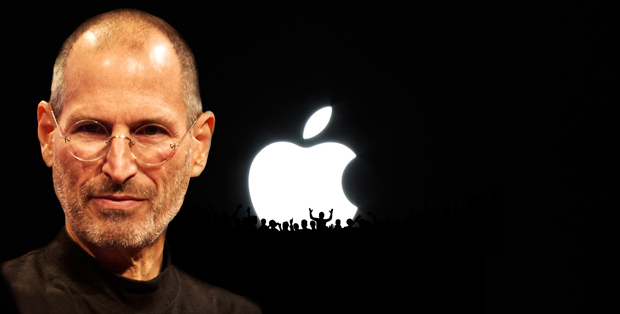In July, 2010, one corner of the blogosphere erupted with the seething, burning rage that online communities seem to have a unique ability to muster.
The spark that lit bloggers' fuse was a decision by SEED Media Group decision-makers to allow a team of writers from PepsiCo Inc. to operate a blog about nutrition and global health on its popular ScienceBlogs.com blogging network. Many of ScienceBlogs' other writers felt this choice had leapt across the ethical line. Some thought the Pepsi-authored blog wasn't labelled clearly to let readers know what they felt it was – advertising in disguise. Some felt that by staying, their reputations, and their credibility, would be diminished.
While SEED did eventually reverse its plan, the damage had been done. The network began haemorrhaging writers, losing nearly a quarter of its roster before the week was out. Blogging as a platform flies on wings of trust, and it seemed that ScienceBlogs - one of the first, and certainly the most prominent science blogging network - had flown too high.
The fiasco – dubbed Pepsigate as the saga unfurled – revolved around two major issues: traditional notions of the advertising-editoral divide that have plagued publishing for ages, but also a new struggle stemming from a lack of understanding of how readers assess the credibility of blogs. Knowing how readers decide to believe a blog post could help make sense of Pepsigate, and whether or not giving a clearer biography of the Pepsi blog's authors would have made any difference.
One recent study by Thomas Chesney and Daniel Su tried to dig in to the factors people use to judge blogs by focusing on pseudonymous* blogging and the impact it might have on perceived credibility.
Chesney and Su gave 269 undergraduate students – 182 in the UK, 87 in Malaysia - a fake story chronicling a blogger's discovery of, and subsequent battle with, nail fungus (ew?). The posts were identical except for the blogger's biographical information running along the top. Here, the researchers had three types of bio: 1) a pseudonym only 2) a pseudonym, age, and sex, or 3) the blogger's “real” name, age, sex, email address and photograph.
The students rated the blogger's perceived credibility, successfulness, trustworthiness, and reputation, along with whether they thought the writer had “an interest in important affairs,” integrity, and had “information of superior quality.” Each of these terms was judged out of seven and combined to give a one-number measure of the bloggers perceived credibility, with one being believable and seven being a skeezy dirtbag.
It turned out, much to the surprise of the researchers, that having a full set of biographical information, or having nothing but a nickname (KrystalKidd, or another similarly creative pseud) made absolutely no difference on how credible the students thought the blogger was.
"I wasn't expecting that at all,” said Chesney, a researcher at the University of Nottingham. "I thought it would make a difference, this idea of having not just a name but also a photograph, but it didn't. There was no difference.”
Pseudonymous bloggers were rated with a 4.40 +/- 0.93, pseud, age and sex earned 4.28 +/- 0.79, and fully identifiable bloggers got 4.26 +/- 0.89. In other words, all three set-ups left the bloggers somewhere in the middle of the seven point scale.
"Whatever the reason," said Chesney, "the implication of [the study] for bloggers is that, should they wish to publish anonymously, they can do so without a loss of credibility."
But in my mind, this is only one possible way of looking at the results. Yes, it could be that people are sympathetic to anonymous bloggers. Or, maybe it's just that the level of trust for blogs isn't up for discussion. So it might not be that bloggers aren't losing credibility by being anonymous, but rather that even by having a photo, an email address and all the rest, bloggers just aren't capable of gaining any points. Chesney said he's sympathetic to the two different interpretations.
"I think that's exactly right. This study doesn't shed any light on which of those it is, but it could be either," he said.
Chesney said there is at least one strong reason why the results may not be perfectly applicable to blogging today, however. He said the research was conducted in around 2006, "before it became known in the mainstream that news organizations were willing to look at blogs, Flickr streams, and microblogs as valid information sources."
He said that at the time, it might have been that, despite their growing prominence, “blogs perhaps were not seen as something worth attention.”
But, Chesney and Su's findings seem to fit within previous research into the perceived credibility of websites in general. The pair wrote that in a study by Eysenbach and Köhler, which looked at how people get health information online, that "few participants were able to name the website where they had eventually found information, and none of them had checked any ‘disclaimer’ or ‘about us’ section of the websites they looked at."
The research, along with a pinch of extrapolation, suggests that for the average browsing reader, the one who will come across a story from Twitter, Facebook, Reddit or any other source, will hardly even notice – let alone care – whose blog they are currently reading. They will read the post, and decide what to make of it based on the content. And then, just like when people learn bad science from movies, they will probably forget where they found the information in the first place.
My point in tying this research to the Pepsigate scandal is to suggest that those who happen to be in charge of giving bloggers an expanded platform (like by being on a blogging network run by a magazine company), need to be particularly ethical in regards to who they hand a keyboard. If the research shows that readers don't look at biographies or check an author's credentials, then the practice of running disguised advertising is a huge breach of their obligations to their audience.
With the default credibility of blogs running so low, and there being little a blogger can do to improve it, they need to be especially protective of any gains they manage to make – a lesson SEED may have learned just a little too late.
*The authors refer to anonymous blogging throughout their study, but technically the research seems to refer to pseudonymous blogging - blogging under a nickname. Anonymous bloggers would be completely unidentified.
----------------
article by Colin Schultz
taken from scientificamerican.com


















